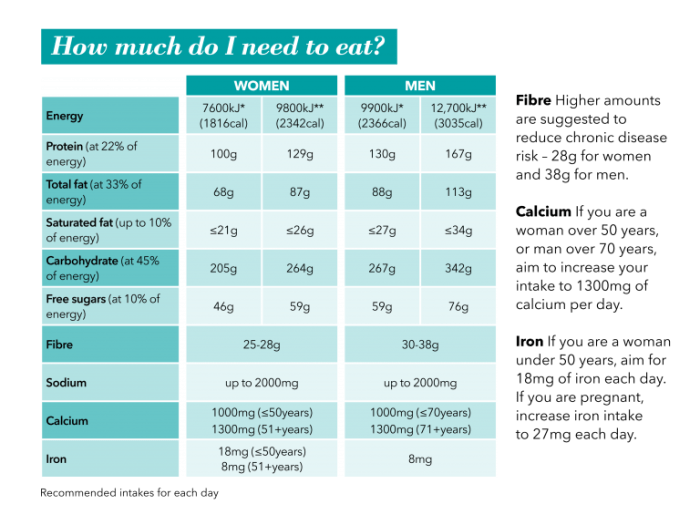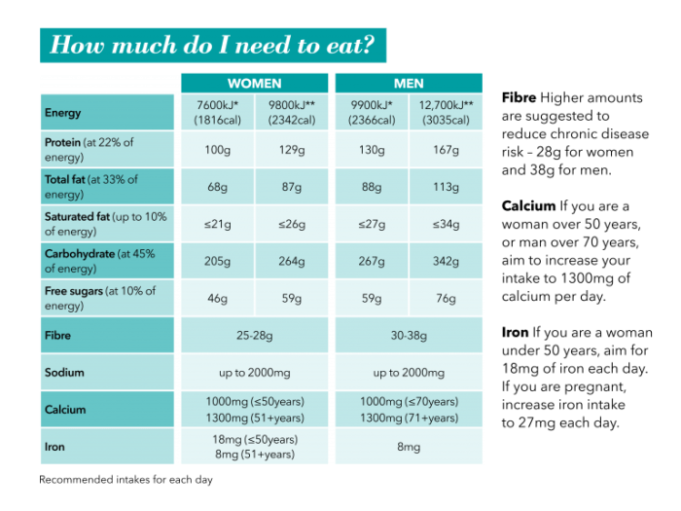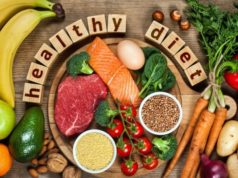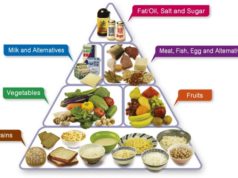Recommended Dietary Allowance for weight management is a cornerstone of achieving and maintaining a healthy weight. It’s not about strict rules but rather a personalized approach to ensure your body receives the necessary nutrients while supporting your weight goals. This guide delves into the science behind the RDA, its application for weight loss, maintenance, and gain, and provides practical tips to integrate it into your daily life.
The Recommended Dietary Allowance (RDA) is a set of guidelines that Artikels the essential nutrients your body needs for optimal health. This includes macronutrients like carbohydrates, protein, and fats, as well as micronutrients like vitamins and minerals. The RDA is not a one-size-fits-all approach; it varies based on factors such as age, sex, activity level, and individual health conditions.
Understanding the Recommended Dietary Allowance (RDA)

The Recommended Dietary Allowance (RDA) represents the average daily intake level of essential nutrients that are sufficient to meet the needs of most healthy individuals. It plays a crucial role in weight management by providing a framework for balancing energy intake with expenditure, supporting overall health, and promoting sustainable weight loss or maintenance.
RDA for Macronutrients
Macronutrients are the essential building blocks of our bodies and provide energy. The RDA for macronutrients varies based on individual needs, but a general guideline is:
- Carbohydrates: 45-65% of total daily calories. Carbohydrates are the body’s primary source of energy and should be primarily complex carbohydrates like whole grains, fruits, and vegetables.
- Protein: 10-35% of total daily calories. Protein is essential for building and repairing tissues, producing enzymes and hormones, and maintaining a healthy immune system.
- Fat: 20-35% of total daily calories. Fat is important for hormone production, cell function, and absorbing certain vitamins. Aim for healthy fats like those found in olive oil, nuts, and avocados.
RDA for Micronutrients
Micronutrients are essential vitamins and minerals that support various bodily functions. Here are some key micronutrients for weight management:
- Vitamin D: Important for calcium absorption, bone health, and immune function.
- Calcium: Essential for strong bones, teeth, and muscle function.
- Iron: Plays a vital role in red blood cell production and oxygen transport.
- Fiber: Promotes satiety, regulates blood sugar levels, and supports healthy digestion.
Factors Influencing Individual RDA Variations
Several factors can influence individual RDA needs, including:
- Age: Nutrient requirements change throughout the lifespan, with higher needs during growth and development.
- Sex: Men generally require more calories and certain nutrients than women.
- Activity Level: Individuals who engage in regular physical activity have higher energy and nutrient needs.
- Health Conditions: Certain health conditions, such as diabetes or pregnancy, may require specific dietary adjustments.
RDA for Weight Loss: Recommended Dietary Allowance For Weight Management
The Recommended Dietary Allowance (RDA) can be adjusted to support weight loss goals. While the RDA provides guidelines for maintaining overall health, it can be modified to create a calorie deficit, which is essential for shedding pounds.
Calorie Deficit and the RDA
A calorie deficit is achieved when you consume fewer calories than your body burns. This forces your body to tap into stored fat for energy, leading to weight loss. The RDA can be used to create a balanced calorie-restricted diet by adjusting the recommended intake of macronutrients (carbohydrates, proteins, and fats) while ensuring you meet your essential nutrient needs.
The RDA provides a framework for a healthy diet, but for weight loss, it’s crucial to create a calorie deficit.
Example Meal Plans for Weight Loss
Here are some examples of meal plans that adhere to the RDA for weight loss, incorporating specific food choices and portion sizes:
Example 1: 1,500 Calorie Meal Plan
- Breakfast (400 calories): 1 cup oatmeal with 1/2 cup berries and 1/4 cup nuts, 1 cup skim milk
- Lunch (400 calories): 1 cup lentil soup, 1 whole-wheat sandwich with lean turkey and vegetables, 1 apple
- Dinner (400 calories): 4 oz grilled salmon, 1 cup steamed broccoli, 1/2 cup brown rice
- Snacks (300 calories): 1 cup Greek yogurt with fruit, 1/4 cup trail mix
Example 2: 1,200 Calorie Meal Plan
- Breakfast (300 calories): 2 eggs with 1/2 cup spinach, 1 slice whole-wheat toast
- Lunch (300 calories): 1 cup salad with grilled chicken breast, 1/2 cup quinoa
- Dinner (300 calories): 4 oz baked chicken breast, 1 cup steamed vegetables, 1/2 cup sweet potato
- Snacks (300 calories): 1/2 cup cottage cheese with fruit, 1/4 cup almonds
It’s important to note that these are just examples, and individual calorie needs can vary based on factors such as age, activity level, and body composition. Consult a registered dietitian or healthcare professional to determine the appropriate calorie intake for your weight loss goals.
RDA for Weight Maintenance
Maintaining a healthy weight is crucial for overall well-being. The Recommended Dietary Allowance (RDA) can be a valuable tool in achieving this goal. By understanding the RDA and its role in weight management, you can make informed dietary choices to maintain a healthy weight.
Balancing Calorie Intake and Expenditure
The foundation of weight maintenance lies in achieving a balance between calorie intake and expenditure. When you consume the same number of calories as you burn through physical activity and daily metabolic processes, you maintain a stable weight. The RDA provides guidelines for calorie intake based on factors like age, sex, activity level, and body composition.
The key to weight maintenance is to find the right balance between calorie intake and expenditure.
Sample Meal Plans for Weight Maintenance
Here are examples of meal plans that adhere to the RDA for weight maintenance, incorporating a variety of foods and portion sizes:
Example Meal Plan 1: Moderate Activity Level
- Breakfast: 1 cup oatmeal with 1/2 cup berries and 1/4 cup nuts (400 calories)
- Lunch: 1 cup lentil soup with a side salad (350 calories)
- Dinner: 4 oz grilled salmon with 1 cup roasted vegetables (450 calories)
- Snacks: 1 piece of fruit, 1/2 cup yogurt (200 calories)
Example Meal Plan 2: Active Lifestyle
- Breakfast: 2 eggs with 1 slice whole-wheat toast and 1/4 cup fruit (350 calories)
- Lunch: 1 cup chicken salad sandwich on whole-wheat bread (400 calories)
- Dinner: 4 oz chicken breast with 1 cup brown rice and 1 cup steamed vegetables (500 calories)
- Snacks: 1/2 cup trail mix, 1 banana (250 calories)
These meal plans provide an estimated 1800-2000 calories per day, which is a common recommendation for weight maintenance in adults. However, individual calorie needs may vary depending on factors like age, activity level, and body composition. It is essential to consult with a registered dietitian or healthcare professional to determine your specific calorie needs and create a personalized meal plan.
RDA for Weight Gain
Gaining weight healthily requires consuming more calories than you burn. The RDA can be a valuable tool for creating a balanced and nutritious diet that supports your weight gain goals.
Calorie Surplus and the RDA
To gain weight, you need to consume more calories than your body expends. This is known as a calorie surplus. The RDA provides a baseline for your daily calorie needs, and you can adjust it upward to create a calorie surplus. The amount of surplus you need will depend on your individual goals and metabolism.
A calorie surplus of 250-500 calories per day is a common starting point for healthy weight gain.
Sample Meal Plans for Weight Gain
Here are some examples of meal plans that adhere to the RDA for weight gain, incorporating calorie-rich and nutrient-dense foods:
Breakfast
- 2 cups Greek yogurt with 1/2 cup granola and 1/4 cup berries (500 calories)
- 3 slices whole-wheat toast with 2 tablespoons peanut butter and 1 banana (550 calories)
- 2 eggs with 1 slice whole-wheat toast, 1/4 cup oatmeal, and 1/2 cup fruit (450 calories)
Lunch
- Tuna salad sandwich on whole-wheat bread with 1 cup salad (500 calories)
- 1 cup lentil soup with 1 whole-wheat roll and a side salad (550 calories)
- 2 cups chicken stir-fry with brown rice (600 calories)
Dinner
- 4 oz baked salmon with 1 cup roasted vegetables and 1/2 cup brown rice (650 calories)
- 1 cup vegetarian chili with 1 cornbread muffin (500 calories)
- 1.5 cups pasta with 1/2 cup marinara sauce and 1 cup meatballs (700 calories)
Snacks
- Trail mix (1/4 cup almonds, 1/4 cup raisins, 1/4 cup dried cranberries, 1/4 cup dark chocolate chips) (300 calories)
- Fruit smoothie (1 cup frozen fruit, 1/2 cup milk, 1 tablespoon protein powder) (350 calories)
- 1 cup cottage cheese with 1/4 cup fruit (250 calories)
These meal plans provide a good starting point for creating a calorie-rich diet. You can adjust the portions and food choices to meet your individual preferences and needs. Remember to focus on nutrient-dense foods to ensure you are getting the vitamins and minerals your body requires for healthy weight gain.
Practical Applications of RDA in Weight Management
The Recommended Dietary Allowance (RDA) serves as a valuable guide for individuals aiming to manage their weight effectively. By understanding the RDA for different macronutrients and micronutrients, you can make informed choices about your dietary intake to support your weight goals.
Incorporating the RDA into Daily Meals and Snacks, Recommended Dietary Allowance for weight management
The RDA can be effectively integrated into your daily meals and snacks through strategic planning and mindful food choices.
- Prioritize nutrient-dense foods: Focus on consuming foods that are rich in nutrients while being relatively low in calories. Examples include fruits, vegetables, lean proteins, and whole grains. These foods provide essential vitamins, minerals, and fiber, which contribute to overall health and satiety.
- Portion control: Even with nutrient-dense foods, portion control is crucial for managing calorie intake. Use measuring cups and spoons to ensure you are consuming appropriate serving sizes. Pay attention to the recommended serving sizes listed on food labels.
- Strategic snacking: Plan healthy snacks throughout the day to help prevent overeating at meals and maintain energy levels. Opt for snacks that are low in calories but high in nutrients, such as a handful of almonds, a piece of fruit, or a small container of yogurt.
- Hydration: Drinking plenty of water throughout the day can help you feel full, reduce calorie intake, and support overall health. Aim for at least eight glasses of water daily.
Common Food Sources for Macronutrients and Micronutrients
The following table provides examples of common food sources for each macronutrient and micronutrient, along with their respective RDAs:
| Macronutrient/Micronutrient | RDA | Food Sources |
|---|---|---|
| Protein | 0.8 grams per kilogram of body weight | Lean meats, poultry, fish, eggs, dairy products, beans, lentils, tofu |
| Carbohydrates | 45-65% of total daily calories | Whole grains, fruits, vegetables, legumes |
| Fat | 20-35% of total daily calories | Olive oil, avocados, nuts, seeds, fatty fish |
| Fiber | 25-38 grams per day | Whole grains, fruits, vegetables, legumes |
| Calcium | 1,000 milligrams per day | Dairy products, leafy green vegetables, fortified foods |
| Iron | 8 milligrams per day for men, 18 milligrams per day for women | Red meat, poultry, fish, beans, lentils, spinach |
| Vitamin D | 600 IU per day | Sunlight exposure, fatty fish, fortified foods |
Importance of Consulting with a Registered Dietitian or Healthcare Professional
While the RDA provides a general framework for dietary intake, it is essential to consult with a registered dietitian or healthcare professional for personalized dietary guidance. They can consider your individual needs, goals, and health conditions to develop a tailored meal plan that meets your specific requirements.
The Recommended Dietary Allowance (RDA) for weight management emphasizes a balanced intake of macronutrients and micronutrients. While this is crucial for everyone, it becomes even more critical for athletes, as their physical demands are significantly higher. For a deeper understanding of the specific nutritional needs of athletes, you can check out this helpful resource on the Recommended Dietary Allowance for athletes.
Ultimately, understanding your body’s needs and tailoring your diet accordingly is key for both weight management and optimal athletic performance.
Understanding the Recommended Dietary Allowance (RDA) is crucial for managing weight effectively. It’s important to consume the right amount of calories and nutrients, which can vary depending on factors like age, activity level, and dietary choices. For example, vegetarians need to ensure they’re getting enough protein, iron, and vitamin B12, as these nutrients are often found in animal products.
Recommended Dietary Allowance for vegetarians provides valuable information on meeting these specific needs. Ultimately, a balanced diet tailored to your individual needs is key to successful weight management.
The Recommended Dietary Allowance (RDA) for weight management focuses on achieving a healthy balance between calories consumed and calories expended. However, it’s crucial to remember that RDAs can vary based on factors like age, gender, and activity levels. You can explore the Recommended Dietary Allowance for different lifestyles to understand how these factors influence your nutritional needs.
By tailoring your diet to your unique lifestyle, you can achieve sustainable weight management goals.
























